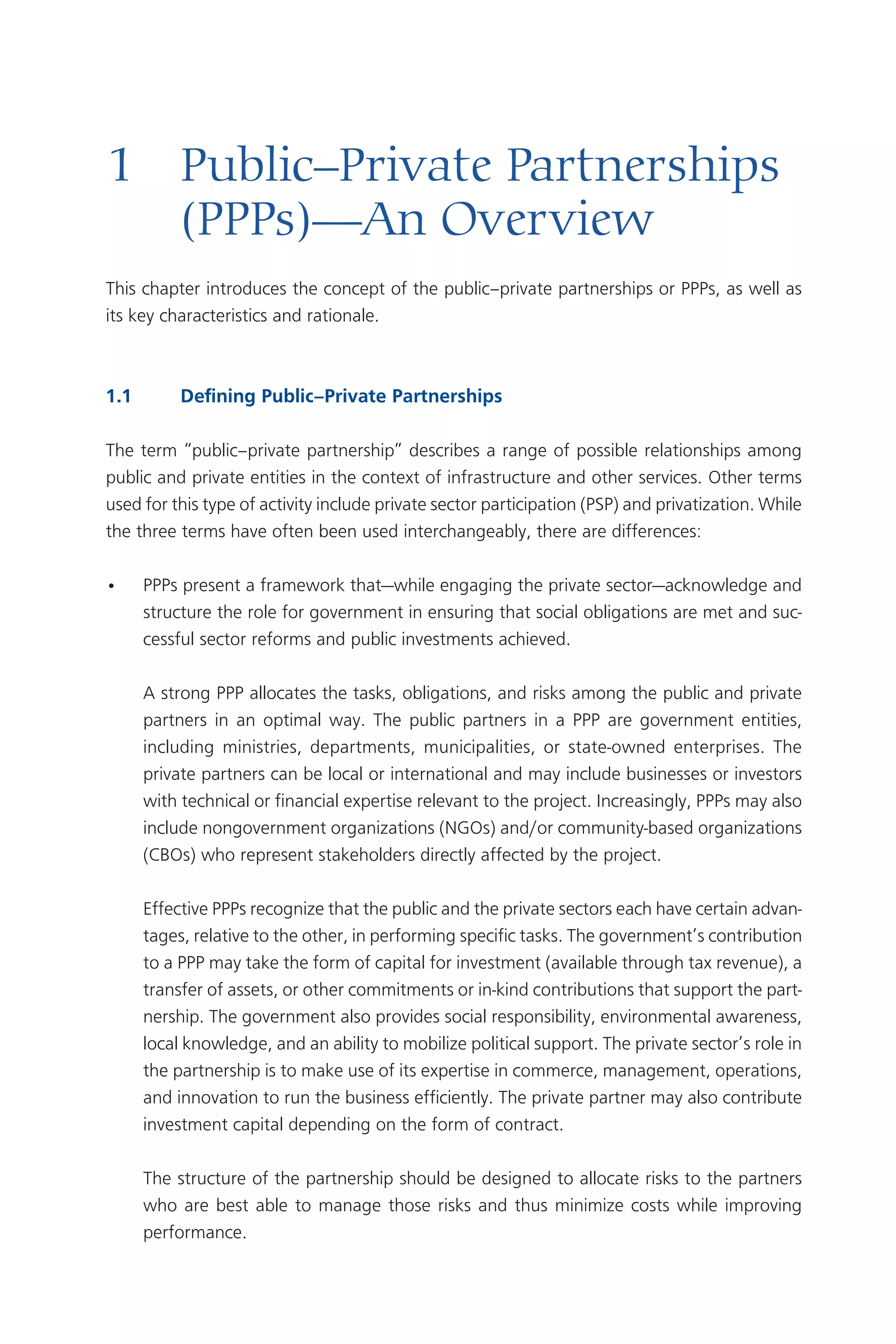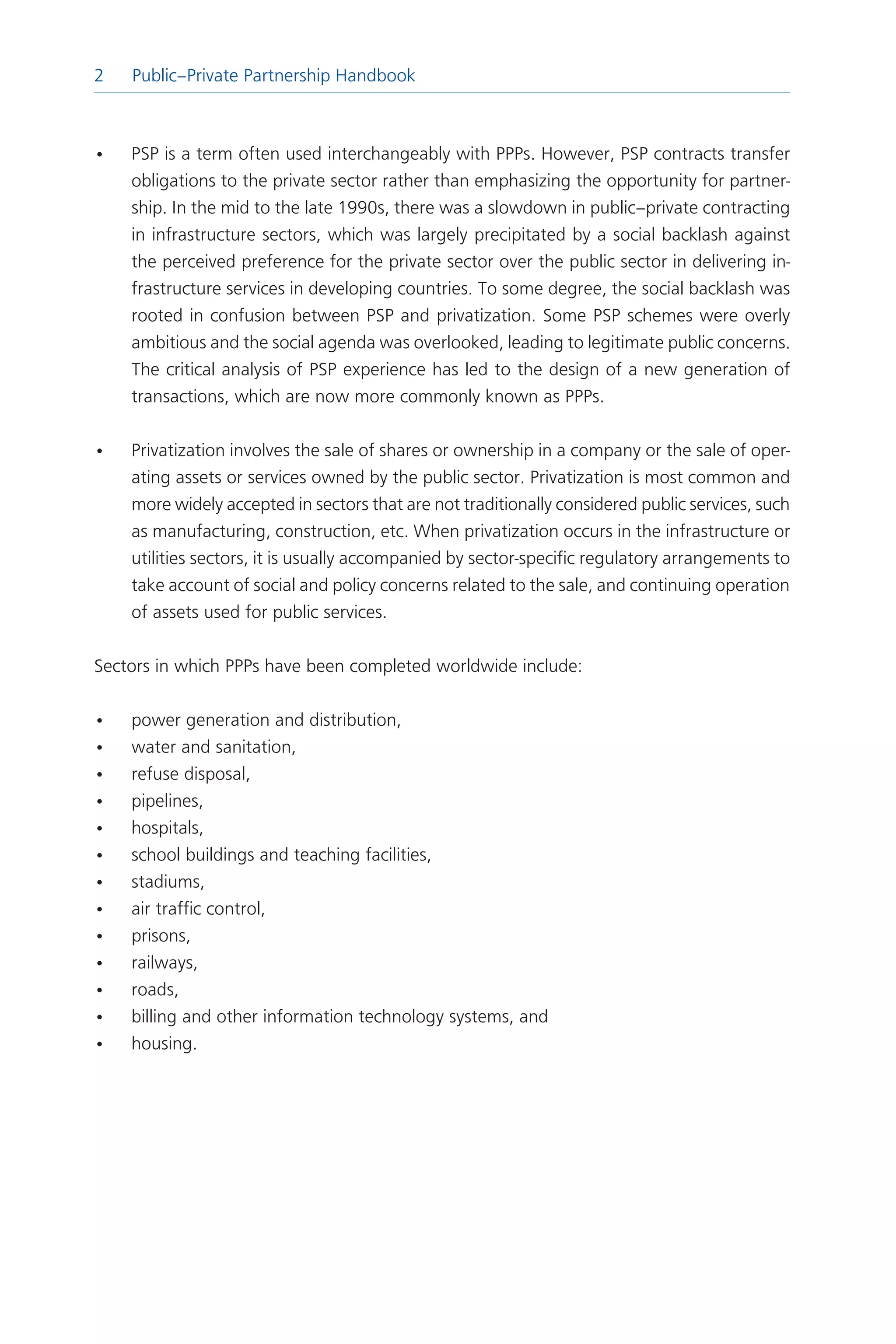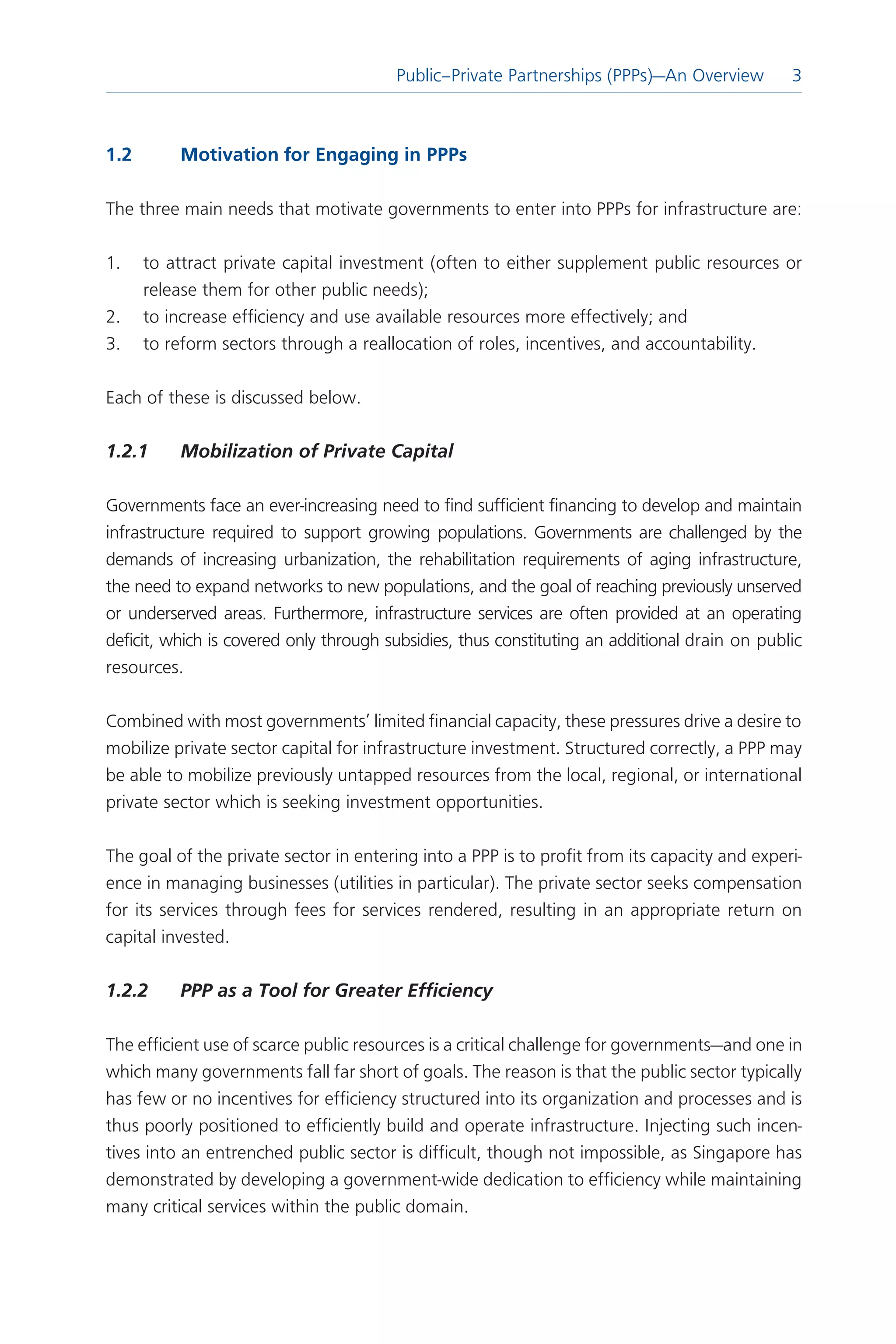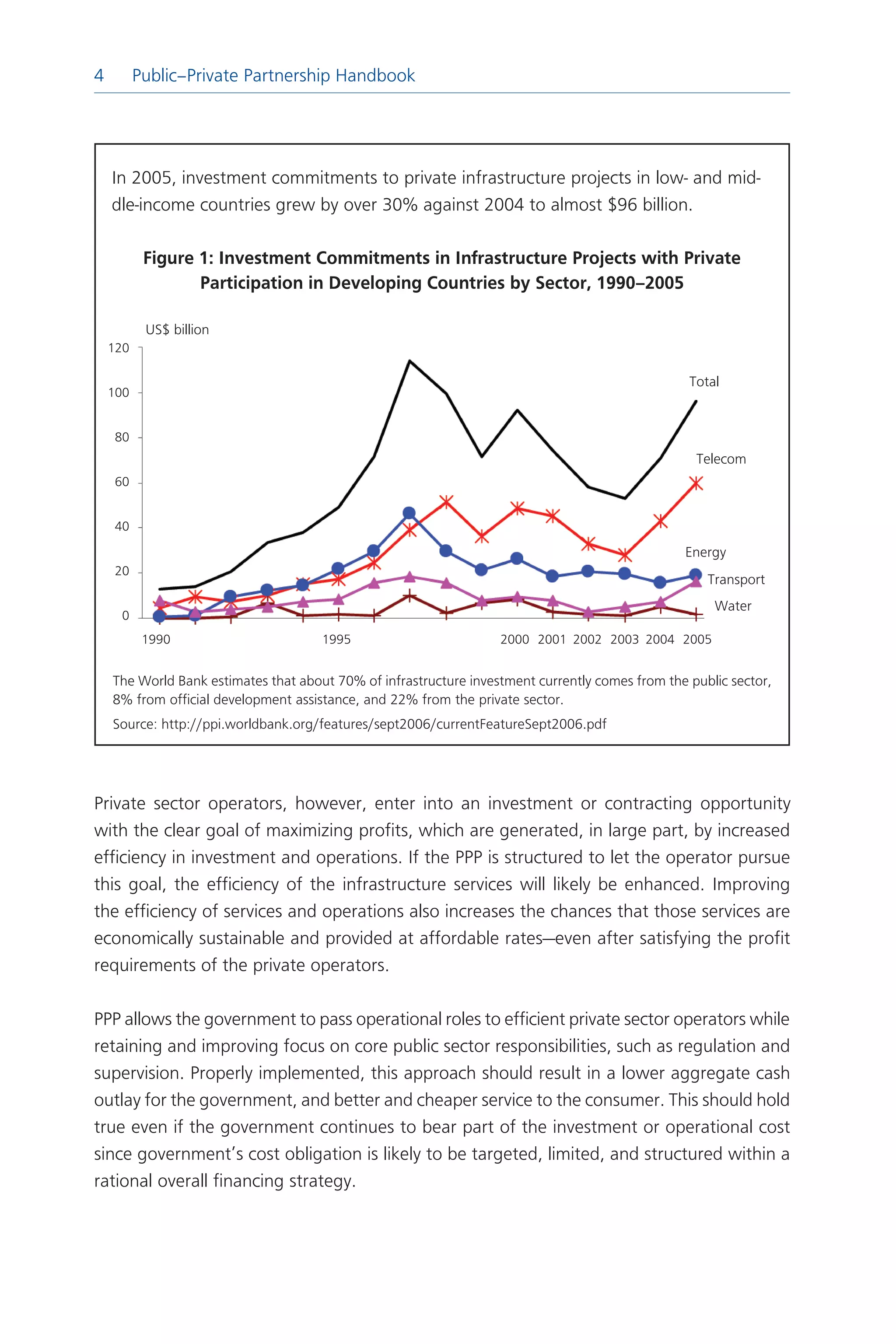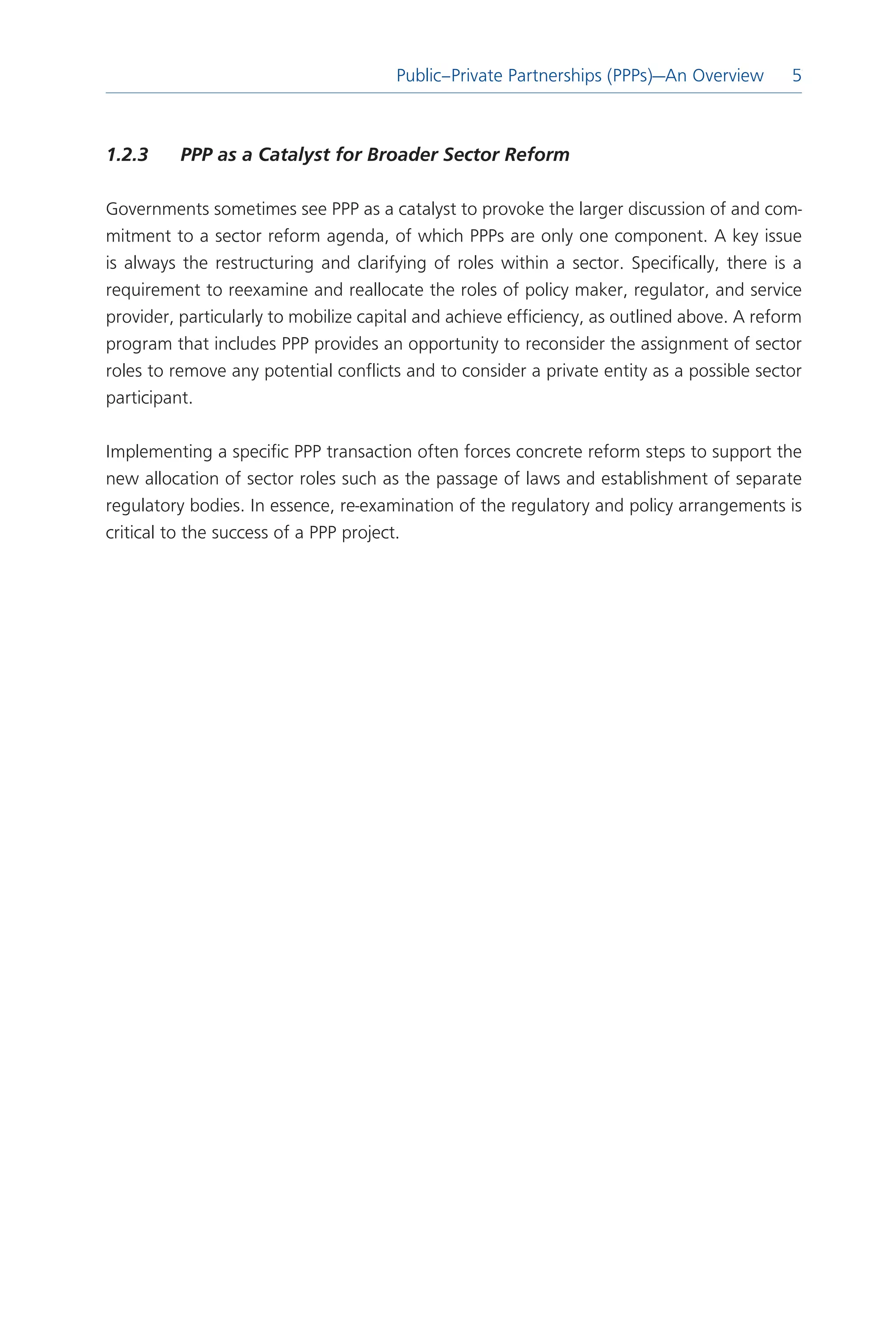This document introduces public-private partnerships (PPPs) and provides definitions and key characteristics. PPPs engage both public and private sectors to ensure social obligations are met through infrastructure projects. Governments are motivated to pursue PPPs to attract private capital investment, increase efficiency, and reform sectors by reallocating roles and incentives. Effective PPPs allocate tasks, risks, and obligations optimally between public and private partners based on their respective advantages. PPPs have been used in sectors like power, water, transportation and more worldwide.
